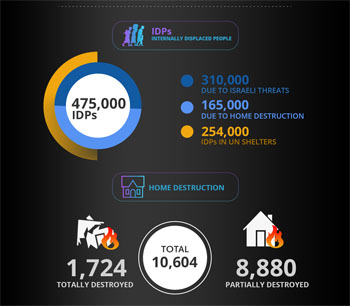Executive Summary
i. Beginning in December 2004, when all parties (including the Government of Israel (GOI) and the Palestinian Authority (PA)) agreed that Palestinian economic revival was essential, that it required a major dismantling of today’s closure regime and that closure needed to be addressed from several perspectives at once, the World Bank has played a leading role in providing balanced analysis and proposals which draw on the Bank’s worldwide experience, but are realistic in the context of the Israeli-Palestinian situation. This note looks, in particular, at the situation within the West Bank which is experiencing severe and expanding restrictions on movement and access, high levels of unpredictability and a struggling economy.
ii. Currently, freedom of movement and access for Palestinians within the West Bank is the exception rather than the norm contrary to the commitments undertaken in a number of Agreements between GOI and the PA. In particular, both the Oslo Accords and the Road Map were based on the principle that normal Palestinian economic and social life would be unimpeded by restrictions. In economic terms, the restrictions arising from closure not only increase transaction costs, but create such a high level of uncertainty and inefficiency that the normal conduct of business becomes exceedingly difficult and stymies the growth and investment which is necessary to fuel economic revival.
iii. The Oslo Accords provided that the movement of people and vehicles in the West Bank “will be free and normal, and shall not need to be effected through checkpoints or roadblocks.”1 The Roadmap specified that GOI would take measures to improve the humanitarian situation including easing restrictions on movements of persons and goods.2 The fact that movement restrictions continued apace and resulted in greater economic hardship is evidenced by the need for a third agreement between the parties in November 2005 — the Agreement on Movement and Access (the AMA) — with the sole aim of “facilitat[ing] the movement of goods and people within Palestinian Territories”. While recognizing that Israel had legitimate reasons to take steps to protect its citizens from violence, it was likewise recognized that this could not take place against the backdrop of Palestinian economic hardship and collapse. In particular, the AMA provided that, “consistent with security needs Israel will facilitate the movement of people and goods within the West Bank and minimize disruption to Palestinian lives”.3 The common basis for all these undertakings is the acknowledgement that without efficient and predicable movement of people and goods, there is very little prospect for a sustainable Palestinian economic recovery. Furthermore, it recognizes that the relationship between Palestinian economic growth and stability and Israeli security remain unarguable and of fundamental importance to both societies’ well-being.
iv. In the West Bank, closure is implemented through an agglomeration of policies, practices and physical impediments which have fragmented the territory into ever smaller and more disconnected cantons. While physical impediments are the visible manifestations of closure, the means of curtailing Palestinian movement and access are actually far more complex and are based on a set of administrative practices and permit policies which limit the freedom of Palestinians to move home, obtain work, invest in businesses or construction and move about outside of their municipal jurisdiction. These administrative restrictions, rooted in military orders associated with the occupation of West Bank and Gaza (WB&G), are used to restrict Palestinian access to large segments of the West Bank including all areas within the municipal boundaries of settlements, the “seam zone”, the Jordan Valley, East Jerusalem, restricted roads and other ‘closed’ areas. Estimates of the total restricted area are difficult to come by, but it appears to be in excess of 50% of the land of the West Bank. While Israeli security concerns are undeniable and must be addressed, it is often difficult to reconcile the use of movement and access restrictions for security purposes from their use to expand and protect settlement activity and the relatively unhindered movement of settlers and other Israelis in and out of the West Bank.
v. While GOI has shown a willingness to consider a relaxation of specific restrictions, including the provision of several hundred permits to unique categories of Palestinians such as businessmen, or the removal of certain physical impediments, incremental steps are not likely to lead to any sustainable improvement. This is because these incremental steps lack permanence and certainty and can be easily withdrawn or replaced by other restrictions. Moreover, sustainable economic recovery will remain elusive if large areas of the West Bank remain inaccessible for economic purposes and restricted movement remains the norm for the vast majority of Palestinians and expatriate Palestinian investors. Only through a fundamental reassessment of closure, and a restoration of the presumption of movement, as embodied in the many agreements between GOI and the PA, will the Palestinian private sector be able to recover and fuel sustainable growth.
To View the Full Report as PDF (824 KB)





